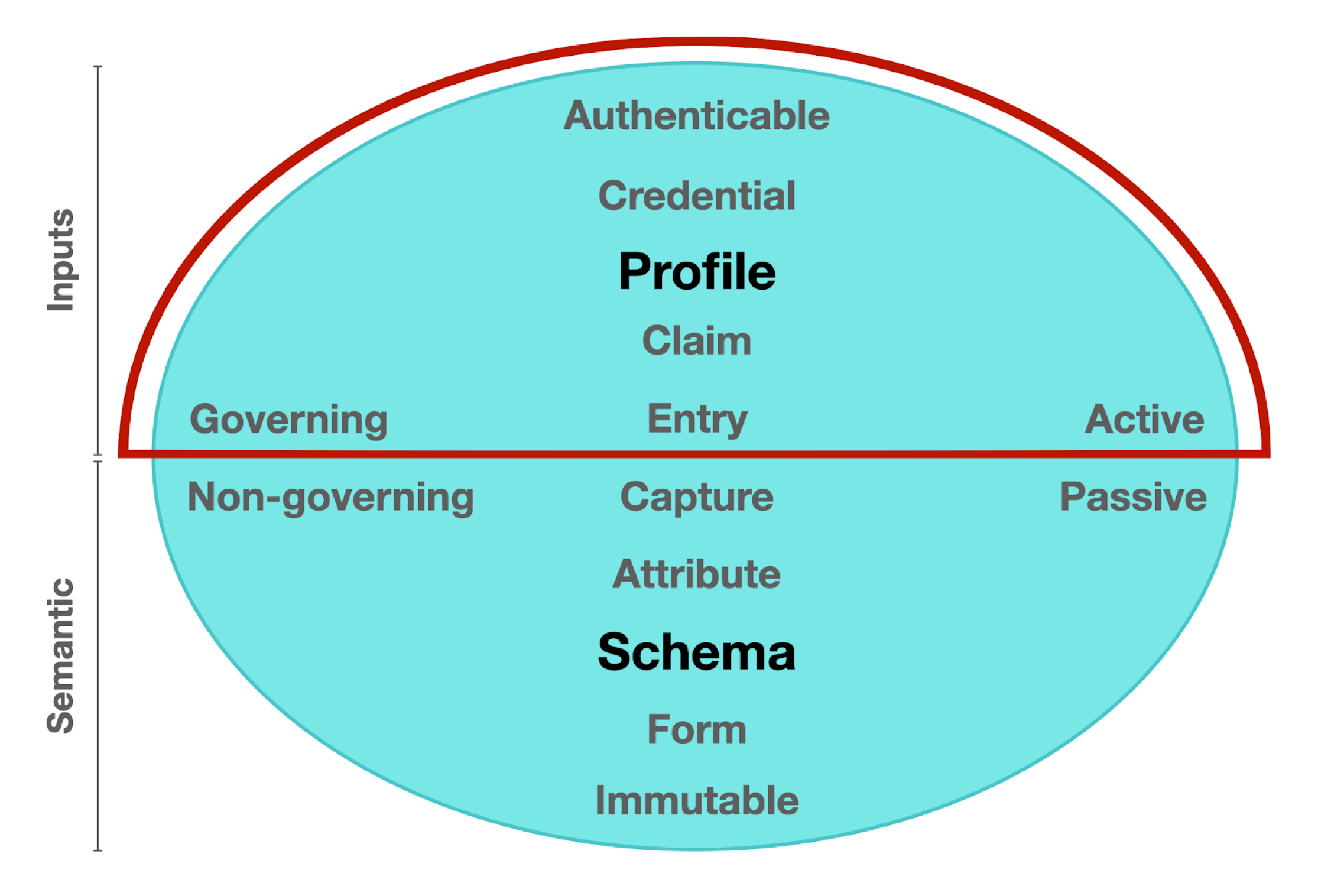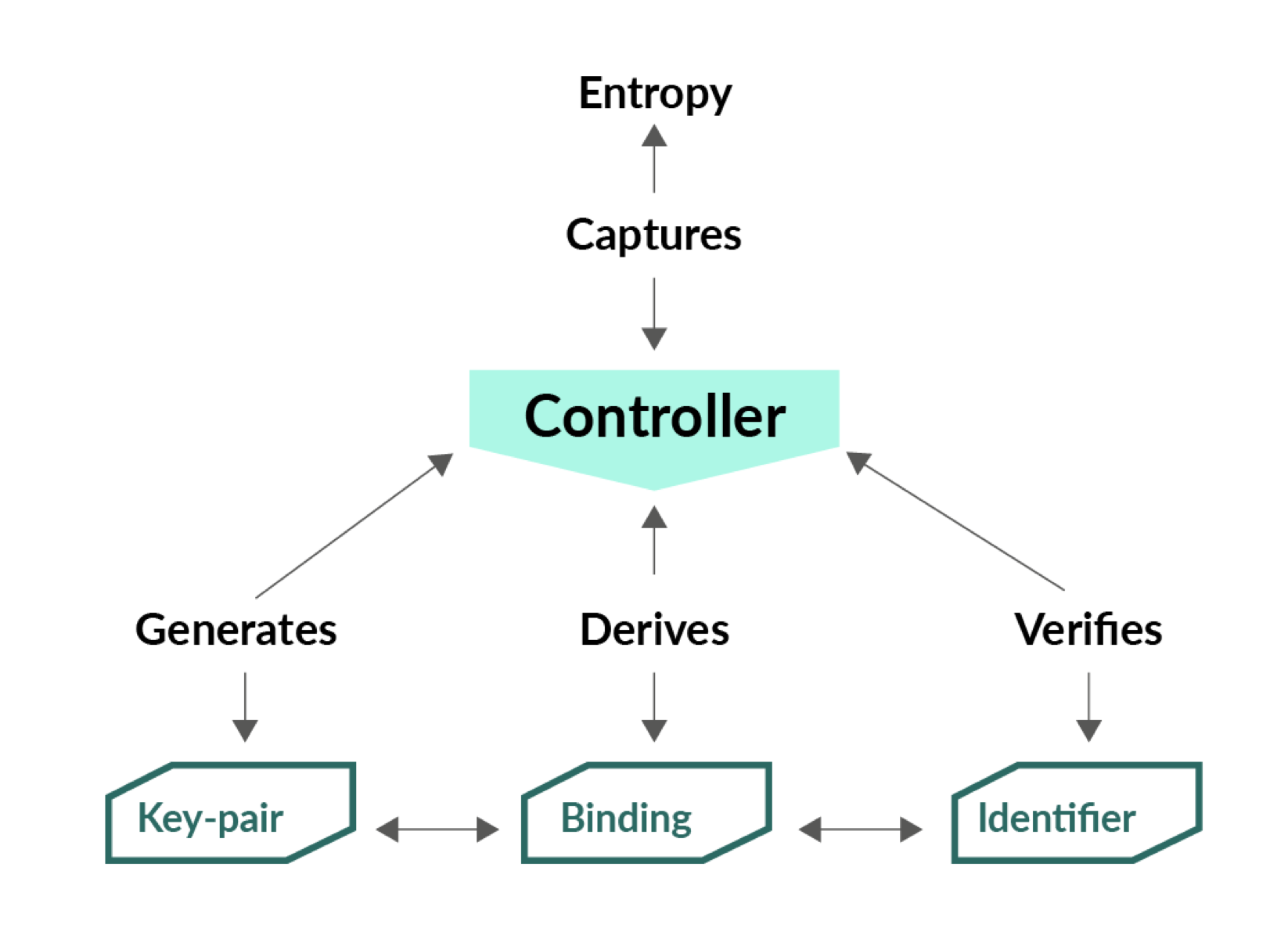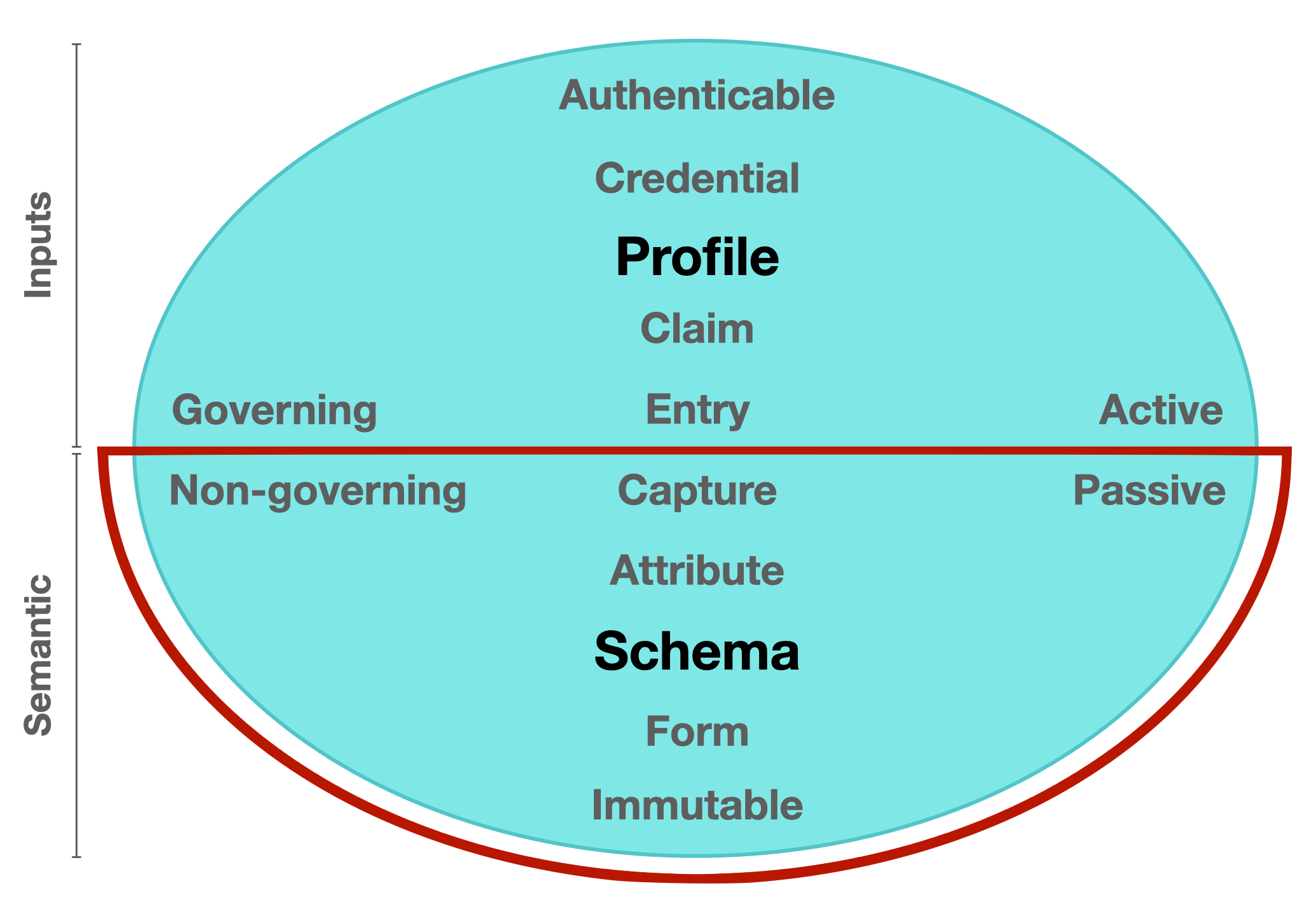Introduction
The Ecosystem Foundry Inputs and Semantics Working Group (ISWG) supports a practical approach to further enable the adoption of the Trust over IP dual-stack architecture by bringing a balanced view of decentralized network paradigms to the overall mission of Internet-scale digital trust. All data inputs operated on by any process or system should be authenticable with the semantics providing meaning and context at the time of capture.
...
Figure 1. Model of Identifier States: A component diagram showing the inputs and semantic counterparts of a balanced network model
Scope
The mission of the Inputs and Semantics Working Group ( ISWG ) is to define a decentralized key management infrastructure (Inputs domain) and data capture architecture (Semantic domain) for Internet-scale deployment. The scope of the WG the ISWG is to define specifications and best practices that bring cohesion to data entry (aka Inputs) and data capture (aka Semantic) processes and standards throughout the ToIP stack whether these standards are hosted at the Linux Foundation or external to it. Other working group activities will include creating template Requests for Proposal (RFPs) and additional guidance to utility and service providers regarding implementations in that capacity. This WG will be divided into Inputs and Semantic domain groups and may also organise Task Forces and Focus Groups to escalate the development of certain components if deemed appropriate by the majority of the WG members and in line with the overall mission of the ToIP Foundation.
How to join
You can join the ISWG by signing up for the Foundation mailing list at lists.trustoverip.org. Our mailing list is inputs-and-semantics-wg@lists.trustoverip.org
Members as well as observers are welcome (with the important caveat below).
Participation
For the protection of all Members, participation in working groups, meetings and events is limited to members, including their employees, of the Trust over IP Foundation who have signed the membership documents and thus agreed to the intellectual property rules governing participation. If you or your employer are not a member, we ask that you not participate in meetings by verbal contribution or otherwise take any action beyond observing.
Inputs Group
Inputs domain [active] / what is put in, taken in, or operated on by any process or system
Figure 2. A component diagram highlighting the Inputs domain within a balanced network model.
Data entry is defined as the process of inputting data into a computer using devices such as a keyboard, scanner, disk, sensor, or voice. In a decentralized network, data entry requires a signing key in order to establish that inputted data has come from an authenticable source. In the above component diagram, all elements and characteristics of data entry are depicted in the northern hemispherical Inputs domain.
Mission and Scope of the Inputs Group
The mission of the Inputs group (ISWG-I) is to define a decentralized key management infrastructure that provides self-certifying identifier issuance underpinned by cryptographic one-way functions for Internet-scale deployment. The scope of this sub-group is to define specifications and best practices that bring cohesion to data entry processes and other Inputs standards throughout the ToIP stack, whether these standards are hosted at the Linux Foundation or external to it. Other sub-group activities will include creating template Requests for Proposal (RFPs) and additional guidance to utility and service providers regarding implementations in this domain. This sub-group may also organise Task Forces and Focus Groups to escalate the development of certain components if deemed appropriate by the majority of the sub-group members and in line with the overall mission of the ToIP Foundation.
Chairs / Leads of the Inputs Group
- Chair: Robert Mitwicki
- Vice-Chair: Samuel Smith
Core Concepts of the Inputs Group
Key management refers to the management of cryptographic keys in a cryptosystem. This includes dealing with the generation, exchange, storage, use, crypto-shredding (destruction) and replacement of keys. It includes cryptographic protocol design, key servers, user procedures, and other relevant protocols.
Successful key management is critical to the security of a cryptosystem. Developing and deploying the right key management infrastructure will ensure the highest level of security to enable tamper-resistant interactions between governing entities as autonomous peers in a digital system.
Key Event Receipt Infrastructure (KERI)
KERI is an architecture that offers information uniqueness from captured entropy by compiling the history of all uses or changes to the public/private key pair. This is achieved by universal self-certifying proofs of the binding between the self-certifying identifier (SCID) and the associated public/private key pairs. It is a truly decentralized key management solution offering the strongest possible levels of pseudonymity, ledger-less identity and separable identifier trust bases for all network participants.
KERI is a secure overlay for an identity system where any digital representation of a governing entity can serve as an autonomous self-certifying root-of-trust. It is a solution that offers secure data control established via self-certifying pseudonymous identifiers. As a standardized global solution for data entry, KERI facilitates sapored data supply chains, enabling a record trail that accounts for the origin of data inputs operated on by any process or system.
KERI resources:
- KERI website - https://keri.one
- KERI whitepaper - https://arxiv.org/abs/1907.02143
Deliverables of the Inputs Group
- Technical specifications for all core components required within the Inputs domain as defined by the Mission and Scope statement.
- Also check out the ToIP Deliverables document for high-level deliverables of the Trust over IP Foundation.
Semantics Group
Semantic domain [passive] / the meaning and use of what is put in, taken in, or operated on by any process or system.


